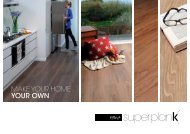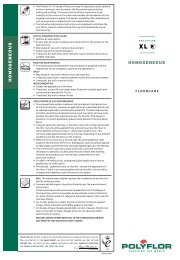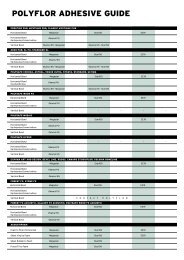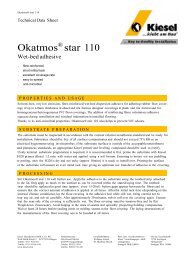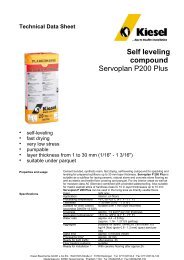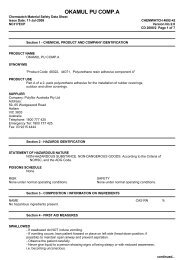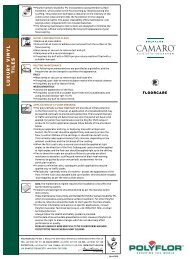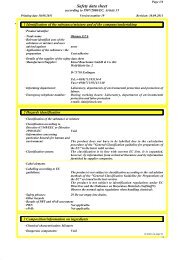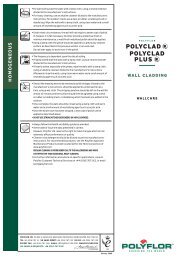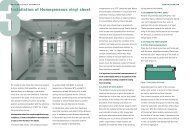Safety Solutions Brochure - Polyflor
Safety Solutions Brochure - Polyflor
Safety Solutions Brochure - Polyflor
Create successful ePaper yourself
Turn your PDF publications into a flip-book with our unique Google optimized e-Paper software.
All Polysafe products achieve a Pendulum reading in<br />
the wet of 36+ which lies within the low slip risk<br />
category and this slip resistance is assured for the<br />
guaranteed life of the product.<br />
PENDULUM TEST VALUE SLIP RISK<br />
(WET TEST USING 4S RUBBER/SLIDER 96) POTENTIAL<br />
0 - 24 HIGH<br />
25 - 35 MODERATE<br />
36 + LOW<br />
For floorcoverings in continually wet areas such as<br />
walk-in showers, a softer TRL (Slider 55) rubber slider<br />
is used on the Pendulum foot (UK Slip Resistance<br />
Group Guidelines 2005) in order to simulate the act of<br />
a bare foot or a user with soft soled footwear slipping<br />
on a floor. The same requirement of meeting 36 or<br />
above is needed to give a low slip risk classification.<br />
Our wet room product adheres to these guidelines -<br />
Polysafe Hydro obtains results of 36+ using<br />
TRL Rubber (Slider 55).<br />
SURFACE MICROROUGHNESS<br />
This test is also favoured by the HSE to be used on-site<br />
in conjunction with the Pendulum test and involves<br />
measuring the total surface microroughness of the<br />
flooring with a surface roughness meter. A mean value<br />
of several peak to valley measurements is electronically<br />
calculated on the surface by tracing a needle over the<br />
floor at various points. This measure is felt to be a<br />
good predictor of slip performance.<br />
All Polysafe products exceed Rz 20µm, and in<br />
accordance with HSE Guidelines are classed as<br />
products with low slip potential in water-wet pedestrian<br />
areas — see table below. Polysafe Ultima has a typical<br />
result of Rz ≥70µm and also has a Pendulum wet test<br />
result of 40+(4S Rubber/Slider 96).<br />
In order to cope with different contaminant spillages of<br />
various process materials, the surface roughness of the<br />
flooring must be sufficient in order to penetrate the<br />
squeeze films created when there is a presence of wet<br />
contaminants between shoe sole and the floor that<br />
prevents solid-to-solid contact. The surface roughness<br />
the floor requires is governed by the viscosity level of<br />
liquid contaminants in the application area.<br />
Note that in the materials listed below, margarine for<br />
example, the minimum floor roughness relates more to<br />
areas where this material is an intrinsic part of the<br />
environment, such as a margarine processing unit, as<br />
opposed to minor use of spreading margarine in<br />
sandwiches in a café for instance.<br />
31



